Ryan Hall's Blog, page 204
November 4, 2016
8 Tough Workouts for Tough Runners

No single workout is going to make you much faster, but overdoing it in even one training session could bring about lasting fatigue or, worse, an injury that sets your training back by days or weeks.
There, you’ve been warned.
With that much said, hard workouts can be a big part of the fun for any runner. The advantages they provide are equal parts mental and physiological—just knowing that you are capable of pushing through a hard hill session or a demanding track workout can provide a major confidence boost.
Performing any of the eight workouts below is a real challenge, and for anyone who isn’t an elite-level runner these are generally not the type of efforts to attempt multiple times in a given week. Even top-tier runners parcel out demanding training efforts, but they also look forward to them and use them for benchmarks.
For example, marathon and ultra-marathon elite Michael Wardian cited a favorite confidence-building session in this training article. “I think a solid track workout of 10 x 1K with 30 seconds of recovery is pretty rad,” Wardian said. “I feel like if I can get through that, I am ready to rumble.”
We’ve arranged the eight workouts below from shorter, speed-oriented sessions all the way up to long efforts for marathon training. Don’t be fooled by the duration though—any of these workouts can inflict significant muscular and neuromuscular fatigue. A good rule of thumb is to end short interval sessions feeling like you could still squeeze out one more repeat without your performance level falling off a cliff. For longer workouts, don’t be afraid to pull the plug if you’re worried that finishing the run will leave you wrecked. Always be sure to get in a good warmup before launching into any demanding training effort.
Hit the Hills
Coach Brad Hudson’s scheme for hill work is simple: Start with just one or two 8-second sprints on a moderately steep incline and build from there. Hudson’s runners progress toward steeper grades, longer repeats and performing larger numbers of them, as described in this straightforward training article. If you’re itching for a tougher hill-oriented session you can also attempt elite coach Mario Fraioli’s fearsome Sisyphus Session.
RELATED: Steep Hill Sprints
100-Meter Throw-down
If you’ve run marathons, you might wonder how repeats of a measly 100 meters could be considered a taxing session. You’ll find the answer to that question in this account of how the great distance champion Haile Gebrselassie incorporated 100-meter sprints into his weekly training schedule.
RELATED: Haile’s 100-Meter Sprints
Speed Anywhere, Anytime
You don’t need no stinking track to do speed work! There’s nothing magical about making left turns on an oval, as evidenced by the fartlek-style workouts in this training article. The brief, but demanding, interval ladder described here gets you to your 5K race pace and a bit better. But since you’re running by feel and time, the workout also helps you develop a stronger sense of your race paces.
RELATED: Speed Workouts You Can Do Anywhere
Climb the Track Ladder
Though a track isn’t strictly necessary to build speed, there’s something inspirational about doing a workout in a facility built just for runners. The “ladders” described here provide options for both ascending and descending structures, so you can start with longer efforts and work down to speedy ones or try the opposite approach. Either way, you’ll be exposed to a variety of paces and distances.
RELATED: Track Ladders
Break it Down
Another track-based session, these 600-meter breakdowns are meant to be run flat-out fast. We’ve outlined versions of the workout for beginners and advanced runners. The advanced version in particular offers a fairly high degree of both volume and intensity, so be sure to save this workout for periods where you’re really trying to tax your system.
RELATED: 600-Meter Breakdowns
Precision Tempo Run
The final track-based workout in this collection comes from two-time Olympian Alan Culpepper. The phrase “tempo run” is notoriously fluid when used by different running coaches, but Culpepper’s workout is reassuringly well defined. The protocol here calls for using a heart rate monitor and pegging the effort at 80- to 85-percent of heart rate maximum, or about half-marathon pace.
RELATED: Alan Culpepper’s Track Tempo Run
Progress Your Running
This distance-oriented session comes from David Laney, an elite ultra-runner, marathoner and trail runner. “The workout gives you a ton of volume around marathon pace and a ton of work at your aerobic threshold without the effort of hammering a half marathon at race pace,” Laney explains. The underlying structure is also easily adaptable—for runners doing lower weekly volumes breakdown of a 4-3-2 or 3-2-1 miles might be preferable.
RELATED: David Laney’s 5-4-3 Progression Run
Marathon Checkup
The 2 X 6-mile workout is one of the benchmark sessions for the members of the Hansons-Brooks Distance Project. It’s meant to run a shade under your goal marathon pace, with a 10-minute break between the two efforts. This workout has a reputation for revealing whether an athlete has overestimated or underestimated his/her marathon race pace, so go into it rested and ready for a demanding session.
Be a Trooper
Lee Troop is a former elite marathoner—he represented Australia three times in the Olympic event—turned coach and running store owner in Boulder, Colo. His 18-mile progressive long run is typically scheduled three weeks out from a goal marathon. It starts off at an easy pace but ramps up every 3 miles, with the final 6 miles performed at goal race pace. If all goes well, Troop believes a marathoner has a very good chance of nailing the goal event.
RELATED: Lee Troop’s Progressive Long Run
The post 8 Tough Workouts for Tough Runners appeared first on Competitor.com.
Fun Facts About NYC Marathon Runners
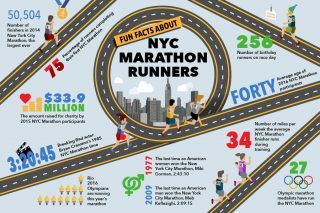
Graphic: Valerie Brugos
For the 46th running of the New York City Marathon on Nov. 6, we created a fun infographic with interesting facts you may have not known about this iconic race. Since New York City has the largest number of marathon finishers in the U.S., it only made sense to take a look at, throughout the race’s history, exactly what kind of runners have been participating in the marathon.
Here’s what we found:
50, 504
Number of finishers in 2014 New York City Marathon, the largest ever.
75
Percentage of runners completing their first NYC Marathon this year.
256
Number of birthday runners on this year’s race day.
40
Average age of 2016 NYC Marathon participant.
34
Number of miles per week the average NYC Marathon finisher runs during training.
$33.9 million
The amount raised for charity by 2015 NYC Marathon participants.
2009
The last time an American man won the New York City Marathon, Meb Keflezighi, 2:09:15.
1977
The last time an American woman won the New York City Marathon, Miki Gorman, 2:43:10.
27
Olympic marathon medalists have run the NYC Marathon.
12
Rio 2016 Olympians are running this year’s marathon.
3:20:45
Breaking Bad actor Bryan Cranston’s 1985 NYC Marathon time.
RELATED: How to Watch the 2016 New York City Marathon
The post Fun Facts About NYC Marathon Runners appeared first on Competitor.com.
Man Runs for Police Lieutenant Who Helped Him at Rock ‘n’ Roll Savannah
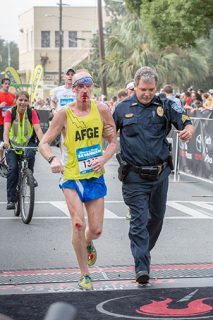
Robert McCoy and Savannah-Chatham Metropolitan Police Dept. Sgt. John Cain crossing the finish line together at last year's Rock 'n' Roll Savannah Half Marathon. Photo: Casey Jones Photography
Nearly 365 days later, Robert McCoy still doesn’t know why he fell face first 200 yards shy of the Rock ‘n’ Roll Savannah Half Marathon finish line in 2015, leaving a two-inch swatch of blood oozing down his nose, past his lips and down to his chin, which blended nicely with his bleeding knees.
McCoy doesn’t know if he tripped over his own two feet, stumbled on the railroad track or just passed out from exhaustion. All he knows is that Savannah-Chatham Metropolitan Police Dept. Sgt. John Cain was there, listened to his pleas to let him complete the race and that Cain escorted McCoy the rest of the way.
Down on the ground for several minutes as emergency personnel tended to him on a day when the November temperature soared to 86 degrees, McCoy kept saying, “I’ve got to finish the race! I’ve got to finish the race!”
“My heart went out to him,” recalls Cain, who remembers telling McCoy, “We’re this close to the finish line, buddy. We can go together.”
With his right hand hooked around McCoy’s left bicep, the men crossed the finish line together.
Two days later, McCoy, with his nose patched, delivered his finisher’s medal to Cain.
“It was completely humbling that he would do that for me,” Cain says. “I didn’t expect anything. I was just out there doing my job, trying to make sure everyone had a good time.”
McCoy, who is in his eighth year of remission from stage IV lymphoma cancer, was running the race in honor of his father Frank McCoy who died of colon cancer on April 30, 2015. He was 72.
“I was doing it for my Daddy,” says McCoy, who lives in Hinesville, Ga., and works for the U.S. Army at Fort Stewart.
Thirty-nine days after the race, Cain was diagnosed with pancreatic cancer. The cancer, he said, is incurable but treatable.
Cain and McCoy are both 50 years old. Cain is married with three children, ages 26, 24 and 18. McCoy is divorced with a 23-year-old son. They met because of McCoy’s running prowess. His half-marathon PR is 1 hour, 22 minutes, 5 seconds, set in 2013 at Rock ‘n’ Roll Savannah.
He turned serious about running after beating lymphoma.
“When I was in the hospital (receiving chemotherapy), I said, ‘I’m going to do something,’” McCoy says. “I started running for my health.”
The video and still images of McCoy and Cain crossing the finish line in unison are captivating. McCoy in shorts and singlet, looking dazed, his face and knees bloodied. Cain in full police uniform, a hint of a smile crossing his lips. A medical support member pedaling a bike behind them, smiling. The story went viral, McCoy doing interviews for the Today Show, Fox & Friends and USA Today.
“It wasn’t just a chance meeting for us,” Cain says. “It was kind of meant to be. It’s given me a whole new respect for the running world, I’ll tell you that.”
Of Cain, McCoy says, “I’m real grateful to him. I wouldn’t have got to the finish line if it weren’t for him. He’s just a nice guy, a very nice guy.”
Last spring, two 5Ks were held to raise money, helping Cain cover medical bills. McCoy ran in one of them. He sends medals and T-shirts to his friend from races he’s run.
“His Daddy having cancer, then I end up having cancer,” says Cain, his voice trailing off. He doesn’t finish the sentence, nor does he need to.
“Robert tells me, ‘John, keep plugging away. Keep fighting. I’m running for you.’ That’s inspirational for me,” Cain adds. “If somebody I just met is willing to go out and tough it out in the rain, the cold, the sun—and you know how hot it can get in Georgia—and run for me, the least I can do is keep fighting.”
When Cain was first diagnosed with pancreatic cancer he was given four months to live. He’s given the stiff arm to that diagnosis.
McCoy will run the Rock ‘n’ Roll Savannah Half Marathon again this Saturday, Nov. 5. He’ll do so in discomfort, with pain in one of his Achilles requiring steroid shots in his heel.
“I’ll get it done,” he said. “Not necessarily fast, but I’ll finish.”
Cain has been on leave since December. He was recently promoted to lieutenant. He finished another round of chemotherapy last week and vows to be at the finish line.
“Whether I’m standing or sitting, I’m going to be there,” Cain says, “watching him finish.”
The post Man Runs for Police Lieutenant Who Helped Him at Rock ‘n’ Roll Savannah appeared first on Competitor.com.
Molly Huddle’s Journey to the NYC Marathon in Numbers

After winning the NYC Half Marathon and setting the 10K American Record in 2016, Molly Huddle has set her sights on her 26.2 debut in NYC. We dug into the numbers and created this data-driven view of her journey to the largest marathon in the world.
RELATED: Molly Huddle Ready for Marathon Debut in New York
Photo Gallery
1 of {count}
Back to Start
View Larger Image
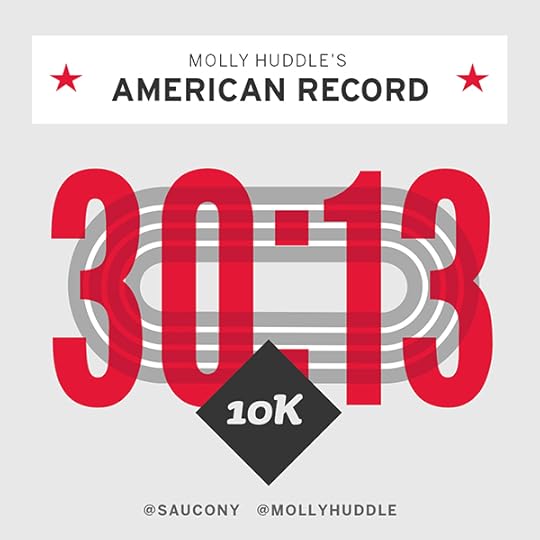
Molly Huddle's 10K American Record
View Larger Image

U.S. Title Road Races Won
View Larger Image
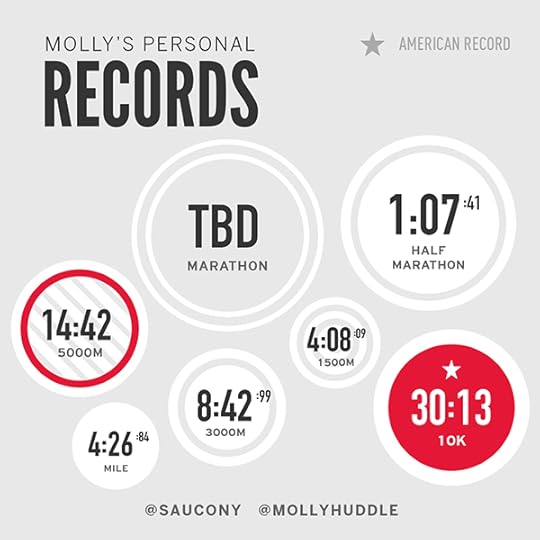
Molly's Personal Records
View Larger Image
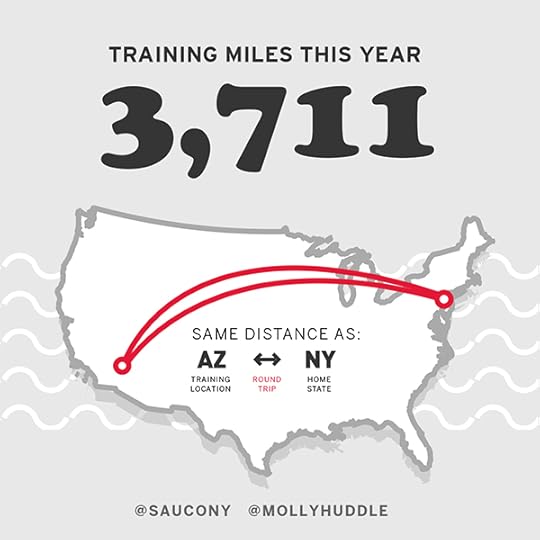
Training Miles this Year
View Larger Image

Lifetime Races Finished in NYC
View Larger Image
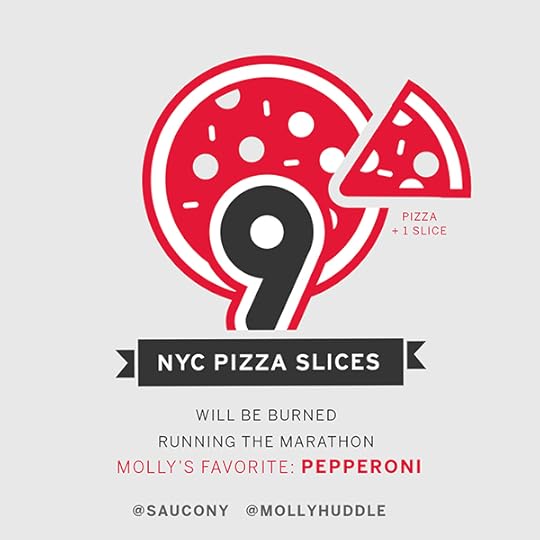
NYC Pizza Slices that Will Be Burned Running the Marathon
View Larger Image
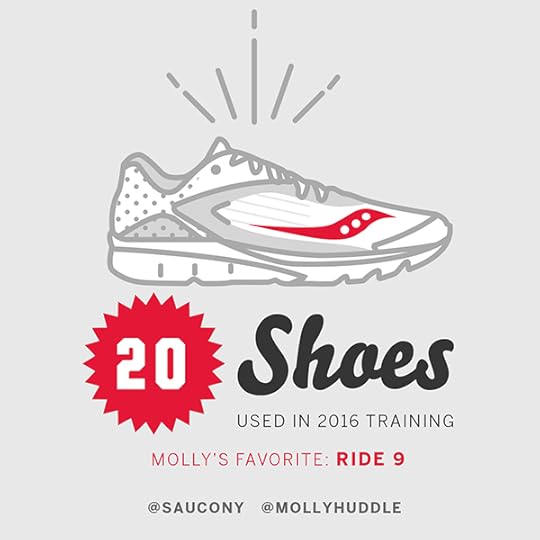
Shoes Used in 2016 Training
View Larger Image

Good Luck Runners!

More Galleries
The post Molly Huddle’s Journey to the NYC Marathon in Numbers appeared first on Competitor.com.
November 3, 2016
Ritzenhein Seeking Podium Finish in New York City Marathon

Despite a disappointing DNF at the U.S. Olympic Trials Marathon in February, Dathan Ritzenhein, shown here en route to a fourth-place 28:12 finish at the B.A.A. 10K in Boston in June, has had a very strong year of racing in 2016. Photo: PhotoRun.net
When it comes to the marathon, Dathan Ritzenhein is a seasoned old pro.
OK, at 33, he’s not old at all, but he admits he’s grown up and learned much about the 26.2-mile distance since his first one 10 years ago in New York that left him plenty disappointed.
Now, with nine marathons under his belt and in perhaps the best shape of his life, Ritzenhein is a cagey veteran at the distance as he prepares to race in the New York City Marathon for the third time on Sunday morning.
RELATED: How to Watch the 2016 New York City Marathon
Over the past decade, “Ritz” has had a lot of success in the marathon—placing 10th in the 2008 Olympics and running a 2:07:47 personal best in Chicago in 2012—but also a few disappointments, too. That includes the first marathon DNF of his career in this past February’s U.S. Olympic Trials Marathon in Los Angeles and plenty of injuries that have derailed his training and race plans. He also finished in the hard-luck fourth-place position at the 2012 U.S. Olympic Trials Marathon in Houston, although he later earned a spot on Team USA for the London Games in the 10,000 meters on the track.
Prior to his debut marathon in New York in 2006, he had high expectations of running a fast time and finishing on the podium. But he struggled late in the race and faded to 11th place finish in a disappointing 2:14:01.
“I was really young and naïve then,” Ritzenhein said Thursday with a grin. “I have a lot less hair and a lot more miles since then.”
While he was being both truthful and speaking tongue-in-cheek, he revealed both the respect and confidence he has for the marathon, not to mention a very certain veteran savviness. In other words, he has a lot of experience—and that’s perhaps the most important factor when it comes to being able to race a fast marathon. As so poetically put by John L. Parker in “Once a Runner,” it’s all about the “trial of miles; Miles of trials.”
“So much has happened since then. In 2006, I had barely started doing anything (as a marathoner),” said Ritzenhein, who also placed eighth in the 2010 New York City Marathon in 2:12:33. “I’ve had a lot of good experience and a lot of bad ones, times going out really hard and dying hard and other times when I’ve come home strong and finished well. Just having all of that experience has made me a different runner.”
A lot has changed for Ritzenhein since he and his family decided to move back home to Grand Rapids, Mich., about two and a half years ago. Prior to that, he’d spent four years in Boulder, Colo., where he was an All-American and NCAA champion in cross country under coach Mark Wetmore. Then he spent six years training in Oregon in different stints under coaches Brad Hudson and Alberto Salazar.
Ritzenhein has served as his own coach since he returned to Michigan, adapting some of the training philosophies from each of his former mentor’s approach to the marathon and occasionally bouncing training ideas off former pro marathoner and high school teammate Jason Hartmann. He mostly trains alone, although he does get some assistance from his stepfather, who occasionally rides along next to him on a bike for pacing and hydration help.
It’s a system that seems to be working. He ran well in Boston in 2015 (seventh, 2:11:20) and he’s coming off a stellar effort at the Great North Run half marathon in the UK, where he finished in 1:00:12 just four seconds behind Olympic track star Mo Farah and 12 seconds off his 2009 PR at that distance.
Ritzenhein took a longer approach to his marathon buildup this time, stretching it out over about six months instead of three or four, and that allowed him to lower his mileage volume during his peak weeks. He will enter Sunday’s race having topped out at 111 miles, but he says he averaged about the same total volume he did leading up to the 2012 Chicago Marathon, which he considers the best marathon he’s ever run.
“It’s gotten a little bit easier on my own, although I also wind up second-guessing things a little bit more as I get closer (to a race),” Ritzenhein said. “And I think that’s one of the biggest challenges, not having a sounding board that you’d have with a coach. I look over training logs from previous years to see what I had done before and how I felt when I was doing those workouts. When you have a coach, you would talk back and forth about those things. So I talk to myself a little bit more and am always trying to figure out what is best and get rid of the junk that comes into my own head.”
RELATED: Olympic Triathlon Champ Gwen Jorgensen Eager to Run NYC Marathon
For New York, he’s focused less on consistent rhythm running and more long, hard runs with surges. His most recent hard workout was a 15-mile tempo run that included numerous pace changes about six weeks ago in Michigan.
“I’ve found with the marathon, you’re going to be by yourself at some point in the race—especially later in the race—and you have to be pushing yourself,” he said. “So at some point, whether you’re leading or falling off the back and alone, you have to be able to dictate the pace yourself and be comfortable doing that.”
Other things Ritzenhein has consciously done in recent years is take one day off a week from running and also reduced his volume in the weeks leading up to a race. He backed off from running twice a day about 10 days ago, although lately he’s been trying to manage his extra time and energy.
“I think the challenge of self-coaching is really about being honest with yourself and for me it’s about not trying to overdo it,” he said. “I listen to my body a lot more and I skip double-run days if I don’t feel good. I looked back at my old notes and felt like I might have done a little bit too much in the two to three weeks before the race.”
Ritzenhein is expected to be one of the top contenders in the men’s elite field of Sunday’s race, which isn’t quite as deep as it has been in recent years but still has the likes of Kenya’s Stanley Biwott (2:03:51) and Ethiopian Lelisa Desisa (2:04:45). Other top Americans include Abdi Abdirahman (2:08:56), Ryan Vail (2:10:57), Matt Llano (2:12:28), Tyler Pennel (2:13:32) and Craig Leon (2:13:52).
“I’d like to be on the podium and have a good chance to win it, so I’m going to have to put myself in that position,” Ritzenhein said. “There are some very good runners in this race, but it’s also not quite as deep as some years, either. Getting on the podium might be easier than some other years, but winning it will be no easier than any other year. It doesn’t matter what other runners do in the race; I’m going to have to be as ready as I can possibly be.”
RELATED: Molly Huddle Ready for Marathon Debut in New York
The post Ritzenhein Seeking Podium Finish in New York City Marathon appeared first on Competitor.com.
Video: Jim Walmsley—The Distance

Check out this stunning new video about Jim Walmsley, the Arizona ultrarunner who recently set a new record running the Grand Canyon rim-to-rim-to-rim. The 26-year-old runner from Flagstaff, Ariz., covered the 42-mile out-and-back trail in 5 hours, 55 minutes and 20 seconds on Oct. 4, taking more than 30 minutes off the previous record.
RELATED: Walmsley Crushes Grand Canyon R2R2R Record
The post Video: Jim Walmsley—The Distance appeared first on Competitor.com.
November 2, 2016
Shoe of the Week: Scott Palani
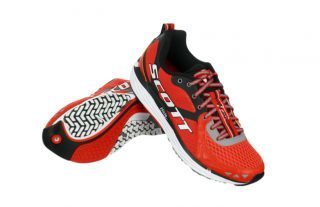
Despite little fanfare, Scott Sports, a Swiss-owned company with a U.S. headquarters in Ogden, Utah, has continued to refine its running shoe line over the past few years. The updated Palani balances the call of duty as a lightweight everyday trainer or a mildly cushioned speed shoe. It’s built on a rockered midsole that helps your foot roll from landing to toe-off with a fluid, efficient stride; a mechanical advantage that is all the more apparent late in a run, when you are tired and can use any help you can get. The Palani is a welcome mix of plush and lightweight and it holds up well for long runs, thanks to the injected midsole material that dampens impact with the road while providing a measure of rewarding rebound. The sizing is a true fit and the open mesh with seamless overlays holds the foot in a tidy and effective manner without compromising breathability. The textured rubber outsole is quite durable and offers superlative road traction. Popular with triathletes, the Palani serves as a go-to lightweight trainer or racer for half or full marathon distances, thanks to its cushioned and neutral performance. However, as a lighter, neutral trainer, the shoe may not have enough guidance and structure for heavier-footed runners.
This is the shoe for you if … you’re looking for a lightweight, versatile shoe for training and racing applications.
Price: $135
Weights: 9.5 oz. (men’s), 8.0 oz. (women’s)
Heel-Toe Offset: 11mm; 25mm (heel), 14mm (forefoot)
Info: scott-sports.com
RELATED: Shoe of the Week—New Balance Fresh Foam Zante 2
The post Shoe of the Week: Scott Palani appeared first on Competitor.com.
An On-The-Course Spectator’s Guide to the NYC Marathon

Photo: Michael Proulx
This year, the New York City Marathon turns 45 years old and thankfully, for the 40th year, the course will no longer be mere loops in Central Park. Rather, the marathon encompasses all five of New York’s boroughs, offering fans myriad spectating perches that are just as dynamic as the runners and city itself.
While most are familiar with the last few trots of the course toward the finish line in Central Park (grandstand tickets must be in hand prior to the race), the 26.2-mile tour of the city offers some other lesser-known, but marvelous places to experience race morning. The ambitious spectator may even consider hopping on the subway to test out various vantage points, but be sure to buy a MetroCard in advance, as the trains may be filled with fellow fans with the same idea. The New York Road Runners mobile app is an excellent way to track the progress of friends (and celebrity runners) as they make their way through the city, but know that your cheering will also be appreciated by strangers as they heave by. It’s one of the few marathons in the world where there are real people rooting for you at just about every inch, making it one of the sporting world’s most consistently feel-good events.
So here are a handful of perches for those hoping to stay stationary.
RELATED: How to Watch the 2016 New York City Marathon
Bay Ridge, Brooklyn (Mile 2-4)
Locals will tell you that there’s Brooklyn, but Bay Ridge is REAL Brooklyn. It’s the first brush with spectators many runners will have when they tear off the starting line in Staten Island and over the Verrazano-Narrows bridge, fresh-faced and optimistic, so motivation is still running high. Made famous by the disco-era classic “Saturday Night Fever,” today the neighborhood is still largely working-class and the best place in all five boroughs for Russian and Greek cuisine. Expect locals to be eating, drinking (yes, even in the early hours of a Sunday morning), and cheering from their stoops as they have been doing for every marathon for decades. It only seems fitting that runners are greeted to the borough by a sign that reads: “Welcome to Brooklyn: How Sweet it Is!”
Fourth Avenue in Park Slope, Brooklyn (Mile 6-8)
Just an easy R or N train ride to the north of Bay Ride is Park Slope, a historic neighborhood that is known for its beautiful brownstones and babies. You’ll see plenty of both if you watch on this very family-friendly leg of the racecourse along Fourth Avenue, as well as some inevitable morning-after hipsters stumbling out of the newly-trendy drinking establishments of Gowanus on the other side of the street. Wide sidewalks leading up to the Barclays Center allow for plenty of vantage points, including good spots for smaller fans and furry companions. Team for Kids Brooklyn has a cheer post on Fourth Avenue and Pacific Streets and at Atlantic Avenue, expect throngs of fans, large monitors, and waits for the subway hub. Grab a cup of Gorilla coffee to go if you want your caffeine boost to blend in with the locals.
RELATED: A Glimpse Inside the NYC Marathon Course in 26 Pictures
Greenpoint, Brooklyn (Mile 12)
Greenpoint, and its neighbor to the south, Williamsburg, are known for their over-the-top youthful trendiness juxtaposed with one of the world’s most robust Polish and Orthodox and Hasidic Jewish enclaves. As a result it’s one of the best stretches of the course for hangover brunches, fresh bagels, and pierogies. Order some, or all, and try to smile away the envious eyes of runners trotting by, pining for the mimosa in your hand. Several restaurants in the area offer food and drink specials for marathon spectators and be sure to stop by Sunshine Laundry (860 Manhattan Avenue) a neighborhood laundromat with pinball machines that often stages its own marathon, but with flippers and balls.
Queens Side of the Pulaski Bridge (Mile 13)
The bridge that spans from Brooklyn to Long Island City is closed to spectators, but it’s a brutal climb for runners about halfway through the course and the motivators at the Long Island City foot of it are much appreciated. This is the hopeless part of the marathon—deep enough into the run that the body starts to feel it, but far enough away from the finish line to feel never-ending. Long Island City has several fun bars and restaurants with lively Sunday scenes and it is a quick shot on the subway from midtown Manhattan. If the race gets soggy, or you’re in need for a hit of additional culture, don’t miss P.S. 1, an architecturally glorious school that now houses world-class modern art.
RELATED: 45 Reasons Why We Love the New York City Marathon
East Harlem, Manhattan (Miles 18-20)
The midtown and Upper East Side segments of First Avenue can be loud, clogged, and a fun of their own, but East Harlem can deliver a similar amount of enthusiasm with less of a frat-house feel. Known as El Barrio, or Spanish Harlem, the neighborhood boasts some of the best murals and street art in the world. While some of it is along the race course on First and Fifth Avenues, much of it is best explored as a walking tour tangentially to the race. The spray paint masterpieces range from political statements, conceptual art, to moving tributes commissioned by families who lost loved ones. The neighborhood also has a bustling small business community, providing ample opportunities for unique street-side snacking and souvenirs.
Bronx (Miles 20-21)
The marathon course barely kisses New York City’s northernmost borough, but it’s not unheard of for this slice of the course to turn into an all-out neighborhood dance party. Any serious runner will tell you that mile 20 is where the race really begins: The psychological test of power and will when the finish line feels dangerously close. The stretch between the Willis Ave. Bridge and the Madison Ave. Bridge is a great spot for fans to feel the contagious power of motivation, without being flanked by the packed crowds of Central Park. Historically, it has been one of the least populated parts of the course, but that’s changing, and you may feel left out if you don’t have a brightly-colored sign or noisemakers in hand. Early afternoon is a great time to make your way here, as those are the runners who could really use the boost to smash the dreaded “wall.”
RELATED: 5 Places to Run In New York City
The post An On-The-Course Spectator’s Guide to the NYC Marathon appeared first on Competitor.com.
Ryan Vail Eyes Redemption at the New York City Marathon
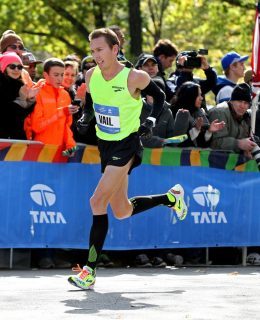
With a 2:10:57 PR, Ryan Vail is one of the fastest American marathoners of the past several years. Photo: Courtesy of Brooks
Running a personal best time won’t be on Ryan Vail’s mind when he steps to the starting line of the 2016 New York City Marathon on Sunday morning. The 30-year-old American, who missed this year’s U.S. Olympic Trials Marathon due to injury, is laser focused on one thing: beating as many people as possible.
“It doesn’t really matter if you run 2:09 or 2:15,” says the Brooks-sponsored Vail, who finished ninth in the Big Apple in 2014, running 2:15:08. “It matters who you’re beating in the field. It’s all about competition.”
New York, if nothing else, is a racer’s race. The challenging five-borough course that starts on the Verrazano-Narrows Bridge in Staten Island and winds its way through Brooklyn, Queens and the Bronx before finishing in Manhattan’s Central Park is not known to be a particularly fast layout. Kenyan Geoffrey Mutai’s course record of 2:05:06 from 2007 sticks out like a sore thumb amongst a sea of 2:08 to 2:11 winning times since 2002. The course resembles a long cross-country race run over asphalt—a profile that suits Vail’s personality, skill set and training grounds in Portland, Ore., quite well.
“I’m definitely taking a cross-country mentality [into it],” says Vail, who was a five-time All-American at Oklahoma State and has finished as high as 17th at the World Cross Country Championships. “The fact that you’re there with no pacemakers, it’s a tough course, and the weather’s been windy and cold the last two times I’ve been there. It’s really about racing the guy next to you.”
RELATED: How to Watch the 2016 New York City Marathon
Vail’s gritty racing style and 2:10:57 personal best (at the London Marathon in 2014) put him near the top of a short list of athletes expected to contend for a spot on the U.S. marathon team that competed in Rio this past summer. But after that was thwarted by a trio of stress fractures that started in the summer of 2015, he says he’s using New York to help get his competitive career back on track.
After finishing fifth in the 10,000m at the U.S. Track and Field Championships in 2015, Vail developed a navicular stress fracture in his foot, his first serious injury in almost nine years. Less than four months later, he suffered a sacral stress fracture, a result, he says of “not taking [the rehab] as seriously as I should have.” With his back against the wall and a lack of time on his side, Vail did everything he could to be ready for the U.S. marathon trials in L.A. this past February, only to suffer a femoral stress fracture just 10 days before the race.
“I understood the risks attempting top marathon shape in a short period of time, but it is still gut wrenching so close to the race,” he said at the time of his injury.
Heading into New York, Vail hasn’t felt as pressured to get fit so fast. He’s prioritized making recovery days and thrice weekly strength sessions staples of his training routine, while reducing his overall running volume from 150 miles per week down to 100 or 110, with one day completely off running each week. Vail says these changes have left him feeling better than he’s felt in a couple years heading into New York.
“I’ve actually felt a lot better than I have in a long time in workouts, not chasing that mileage target for the week and just listening to my body and forgetting all of that,” admits Vail, who posts his training publicly on his blog. “I think it’s benefitted me a lot. All those 150-mile weeks, they’re still in my body but right now I don’t have to be doing that going into New York. I just have to be healthy and get the good high quality stuff in. Eventually I’d like to go back to higher volume but right now I’m relying on that past volume that I’ve done.”
RELATED: Olympic Triathlon Champ Gwen Jorgensen Eager to Run NYC Marathon
Vail steps to the starting line on Sunday feeling grateful for the opportunity to do what he does best: compete. Ten straight years of higher volume and consistent improvement prior to this most recent injury cycle give him the confidence that he’s ready to put his cross-country instincts to good use in a race that emphasizes place over pace.
“I just have to maintain confidence and patience and know that my fitness is there,” Vail says. “My workouts have gone great and I’m not going to try and short myself. I want to have the best New York I’ve ever had. I’ve been 9th, so I’d like to be in the top 10. I’m not going to throw anything out the window in terms of being the top American. Obviously Ritz (Dathan Ritzenhein) is running incredibly well right now but anything can happen in New York. I’m going to try and put myself in that position to be top 10 and race the best I can over the last 10K and see where I end up.”
RELATED: Molly Huddle Ready for Marathon Debut in New York
The post Ryan Vail Eyes Redemption at the New York City Marathon appeared first on Competitor.com.
Athletes, Coaches, Advocates Support Launch of Clean Sport Collective
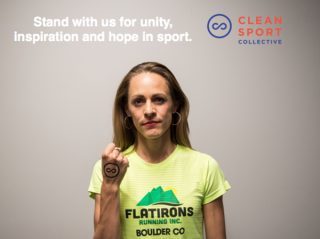
Jenny Simpson, the 2016 Olympic bronze medalist and 2011 World Champion in the 1,500m run, shows support for the Clean Sport Collective on the non-profit organization's website.
Fed up with doping, the dirty business practices and politics that allow it to happen and national and international federations that don’d do enough to eliminate it, a new organization launched today with a mission to clean up track and field, running, cycling, triathlon and other sports plagued by performance-enhancing drug use.
Some of America’s top distance runners, cyclists, triathletes, endurance coaches and advocates have announced their support of a new anti-doping initiative known as the Clean Sport Collective. The initiative launched Wednesday morning with an impressive online campaign that included testimonial support from numerous elite athletes, including several Olympic and World Championships medalists.
Among those onboard from the start are Jenny Simpson, Emma Coburn, Gwen Jorgensen, Kara Goucher, Alysia Montaño, Molly Huddle, Jeremy Powers, Nick Symmonds, Jesse Thomas, Sage Canaday, Stephanie Bruce, Sheila Reid, Lauren Fleshman and Sara Hall. Many leading endurance brands are also involved, including Brooks, Nuun, Oiselle, Skechers, Run Gum, Altra and Picky Bars.
I pledge that I have and always will train clean, complete clean, and live clean. Stand with me at https://t.co/6xNp7KeEwU. #cleansportco pic.twitter.com/jERHg4S4K6
— Kara Goucher (@karagoucher) November 2, 2016
Proud 2 stand w @CleanSportCO -I pledge I have & always will train clean compete clean and live clean! Support @ https://t.co/IdDSwJDx5r ! pic.twitter.com/kTUpzk9DKh
— Molly Huddle (@MollyHuddle) November 2, 2016
Molly Huddle will make her marathon debut in her home state this Sunday at the New York City Marathon.
We pledge to create positive change by supporting athletes who are committed to clean sport. Join us. https://t.co/qzYdrO9eLS #cleansportco pic.twitter.com/gnBuTp9FOy
— Picky Bars (@pickybars) November 2, 2016
Those athletes and brands have been all over social media showing their support with a temporary tattoo of the Clean Sport Collective logo.
The initiative was created by a 501c-3 non-profit organization based in Boulder, Colo. According to a statement on cleansport.org, the organization is intended to be a community of powerful voices comprised of athletes, brands, events, clubs, fans and the public to support the pursuit of clean sport and athletics through the absence of performance enhancing drugs.
“With the help of our partners, we will work together to bring the importance of clean sport to the general public through awareness, testing, industry advocacy and restoration,” the organization proclaimed through a release. “We want to raise awareness and positivity through the celebration and recognition of the clean athletes, events, industry and brands doing it the right way. Our mission is ‘United together for honesty, integrity and transparency in sport.'”
To join the collective, each person is asked to sign the pledge on cleansport.org that corresponds with their charter. There nine charter categories—Brands, Events, Professional Athletes, Student Athletes, Amateur Athletes, Coaches/Agents, Club Teams, Medical Professionals/Trainers, and Fans.
After just a few hours, hundreds of additional athletes, coaches, agents, brand representatives and fans have taken the pledge.
The group says it is trying to organize 1 million voices “to support the athletes who train and compete clean and give hope to future generations.” A quick check of posts linked to #cleansportco shows hundreds of athletes, coaches, fans and advocates joining the movement.
Ultrarunner, coach and race organizer Ian Sharman posted this on Twitter in support of the initiative.
I pledge that I have and will always train, compete and live clean. Stand with me at https://t.co/wbLhTOQllN #cleansportco @cleansportco pic.twitter.com/Mky8sIZUt2
— Ian Sharman (@sharmanian) November 2, 2016
“We are in this together,” declares a message on the organization’s website. “The more voices that speak in unity, the stronger we are. Let’s lift up clean athletes. Let’s bring awareness to the detrimental reach that one athlete choosing to dope can have on clean athletes, brands and support systems. Let’s change the rhetoric and celebrate the athletes, brands, events, teams and industry professionals doing it the right way.”
The post Athletes, Coaches, Advocates Support Launch of Clean Sport Collective appeared first on Competitor.com.
Ryan Hall's Blog
- Ryan Hall's profile
- 21 followers



